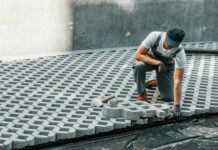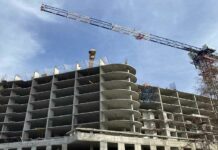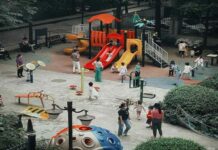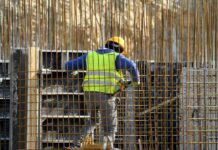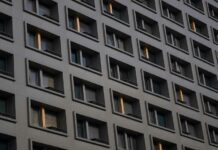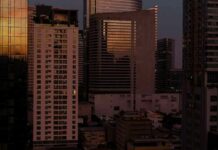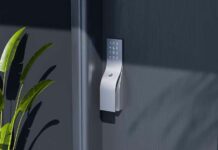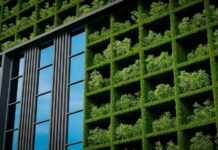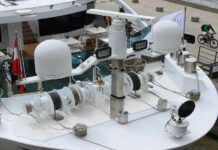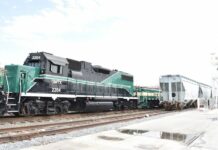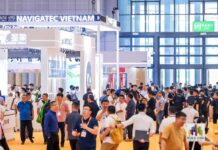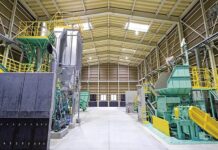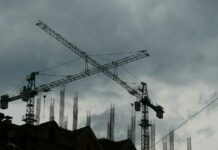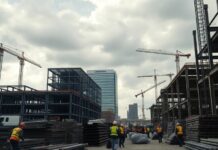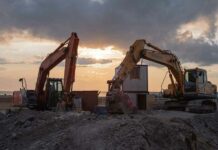The Chicago office of Skidmore, Owings & Merrill LLP (SOM) has announced that it has won an international competition to design the Greenland Group Suzhou Center, in Wujiang, China.
The 358m supertall tower will become the defining visual landmark for both the new Wujiang lakefront development and for the city as a whole. Ross Wimer, SOM Design Director, states: “This design is the result of a serious interdisciplinary collaboration in our Chicago office. Like a high performance car, the digital modelling of aerodynamics was critical to the shaping of the building. The design team included structural and mechanical engineers from the very beginning and their input helped to define all aspects of the tower.”
The 75-level building is designed to accommodate a complex mixed-use program including office, service apartments, hotel and retail on a 37,000 sq m site. Sited prominently along Taihu Lake in the Jiangsu Province of China, the building’s curved, tapered form unifies the office, hotel and residential uses within a single volume. The tower features a 30-storey tall operable window corresponding to the hotel and residential floors, that helps drive the environmental performance of the development.
The tower’s form is optimised to harness natural forces in and around the site to maximise its performance. High performance design engineering has been integrated into its design. Bill Baker, SOM Structural Engineering Partner, comments: “This unique tower expresses the strength of the building in a way that is both interesting and structurally functional.”
The Wujiang Greenland Tower’s composite core and outrigger structural system use proven cost-effective construction techniques, while its unique split-core configuration of the upper floors increases the efficiency of the building structure. By placing half of the building core program on each side of the lobby and interconnecting them with structural steel braces, the combined core becomes more effective than a typical centre core system while also creating a dramatic tall lobby space within.
The atrium is a key design feature of the building. It maximises daylight penetration, facilitates mixed mode ventilation in the lobbies and public spaces, and acts as a fresh air supply source for the tower. The building is oriented to harness both the stack effect and prevailing winds via the east and west façades of the atrium.
Major high performance energy saving strategies include a high performance façade, utilising cooler outside air at higher levels for natural ventilation of the atrium, natural light harvesting using daylight responsive controls, lighting energy optimisation using efficient fixtures and occupant controls, energy recovery systems, demand controlled ventilation, and an onsite energy centre with combined heat and power plant to capitalize on the overall load diversity of the development.



